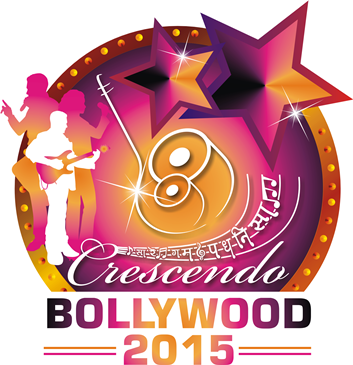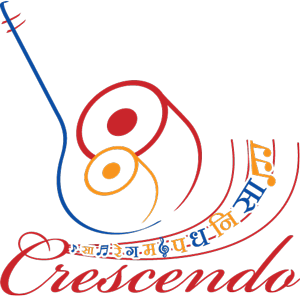Devotional Music of Maharashtra - by Chaitanya Kunte
The devotional music in India has longstanding tradition from Vedas till date. For the venerable purpose of worshiping the God, music has always been used as a medium. In Maharashtra, there is a well documented custom of devotional music which can go back to more than thousand years. Maharashtra is full of religious sects and sub-sects and the places of pilgrimage. Pandharpur is the most celebrated place for the cult of Vithhoba, a regional incarnation of Vishnu in the form of a shepherd God. The worshipers of Vithhoba have a pilgrimage every year to Pandharpur and during this journey; they sing and dance in devotional trance. The Bhakti movement in Maharashtra was initiated by saint Dnyaneshwar, and then it was carried forward by saint Namdev, Eknath and Tukaram whose poetry is very popular in Maharashtra. This movement is also popularly known as 'Warkari Movement'. Saint Ramdas was also a prominent saint and he formulated a cult with worship of God Ram and had a mission of creating social awareness. For these obvious reasons, Maharashtra is known as a land of saints and there is a rich tradition of saint poetry in Marathi. From 12th to 18th cent AD, there are more than hundred saint poets listed in Maharashtra, whose poetry occupies a major portion of devotional music of Maharashtra. Singing the devotional poetry by these saints was a daily task in yester years and today it has some reminiscences in the villages of Maharashtra.
The devotional music of Maharashtra is aimed for group singing more than solo singing. People use to gather in the temples for Keertan where the Keertankaars use to preach the spiritual, devotional, social and also national message with the help of music. Music was a very important aspect of Keertan and till 1970s there were a lot of Keertankaars who were well versed in classical music and known for their singing along with the preaching.
There are three major traditions of Keertan in Maharashtra - Naradiya Keertan, Waarkari Keertan and Ramdasi Keertan. In the age of national freedom movement, the Raashtriya Keertan was a novel form of Keertan for spreading the message of nationality and freedom in the garb of devotion.
The Marathi Bhajan begings with 'Naman' (invocation of God), continues with 'Roopachaa Abhang' (Abhang portraying the physical beauty of God in human form), Abhang on importance or supremacy of a Guru, Abhang giving a spiritual or moral message. Then lighter compositions such as Gawlan (a maiden's song) or Wiraani (song on a mood of separation) are recited. Again some Bhajans giving devotional and ethical message are to be sung and at the end, Pasaay-Daan (prayer by saint Dnyaneshwar for the wellbeing of the universe) is to be sung.
Abhang is main form of devotional poetry and music. The meter of Abhang is said to be formulated by saint Dnyaneshwar and then it was made common by saint Namdew. There are two types of Abhang - 1. Devadwaar Abhang & 2. Deviwar Abhang. The Abhangs have four Charans, the first three are of the same meter, but the last one i.e. fourth one is comparatively shorter. Abhangs by Tukaram are the most famous verses in Marathi.
Abhang and Bhajans are set to a specific Raag and Taal. But the Raag structure is observed to be deviated many times for the sake of liberty of expression. Dhumaali or Bhajani Taal played on Pakhawaj and Taal (a solid cymbal instrument made of metal) is most common for Marathi Bhajans. Instruments such as Ektari, Tambura are used in Bhajan along with Taal, Chipli, Zanj, Pakhawaj. Now days, Harmonium and Tabla are also used. Ektaari or Veena is plucked during Abhang singing by the main singer and the group followes him line by line. The Abhang is unfolded with little bit of improvisation of Alaap, Taan and now Sargam. Most of the tunes for Abhang are from folk music of Maharashtra and so, they are simple, hummable and linger in a cluster of 4-5 notes. The high pitch pronunciation is remarkable in Marathi Bhajans. There are many forms of devotional music, such as Gawlan, Wirani, Bharud, Owi, Panchapadi, etc widespread in Maharashtra. The devotional music of Maharashtra covers a wide range of genres from folk music to art music. Some songs are more of folk nature and demand for a loud accent. On the contrary, some involve a more serious and elaborate improvisation like the Dhrupad or Khayal.
The traditional devotional music of Maharashtra was passed on to generations verbally. It was also made popular in the classical music concerts by Master Krishnarao Phulambrikar, Bal Gandharwa, Bhimsen Joshi, Kishori Amonkar, Jitendra Abhisheki etc. In the form of commercial records and cassettes, Marathi devotional songs by composers like Sudhir Phadke, Snehal Bhatkar, Shriniwas Khale, Hridaynath Mangeshkar, sung by G L Ranade, Jyotsna Bhole, Manik Varma, Lata Mangeshkar, Asha Bhosale, etc are famous.



